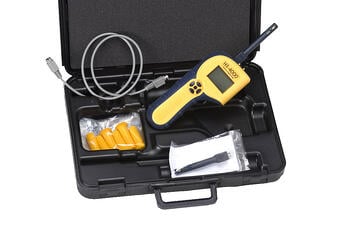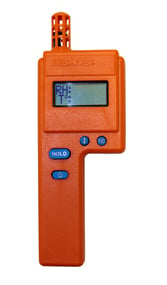 When you’re working with moisture meters on the job, you expect that the measurements you’re getting are as accurate as possible. A difference of a few percentage points in the moisture content of building materials such as wood, drywall, concrete, or insulation could mean the difference between the material being considered safe or unsafe.
When you’re working with moisture meters on the job, you expect that the measurements you’re getting are as accurate as possible. A difference of a few percentage points in the moisture content of building materials such as wood, drywall, concrete, or insulation could mean the difference between the material being considered safe or unsafe.
Accurate moisture content (%MC) measurement equals better, higher-quality work. But, how can you be sure that you’re getting accurate measurements? How can you validate your moisture meter calibration while you’re on the job?
There are actually a couple of ways to check the calibration of your moisture meters on the go, including:
1: Using a Moisture Content Standard (MCS) or Moisture Block
If you’re using a pin-type moisture meter, odds are that the manufacturer makes a special Moisture Content Standard, or MCS, device for it.
The testing process for these are pretty simple: just touch the pins of your moisture meter to the contact points on the device and take a reading. If your meter is in calibration, you will get a reading equal to the one specified on the face of the MCS. If you get a different reading, then your meter is out of calibration. Try changing the battery and if the meter still reads out of calibration, it needs to be serviced/replaced.
On the other hand, pinless moisture meters use a different testing tool—usually called a moisture block. These tools consist of a solid block that’s made to provide a set moisture measurement when scanned with a pinless meter.
Simply push the pinless meter’s scanning plate against the moisture block and take a reading. If the measurement value matches the %MC the block is supposed to read, then your meter’s working fine!
2: Built-In Calibration Checks
Some moisture meters have a built-in calibration check feature that lets you test the meter’s calibration with the touch of a button. These checks are often considered the easiest and most reliable way to check moisture meter calibration on the go.
There’s no other devices needed—just hit the calibration check option in the meter’s menu, and you’re set.
Checking Thermo-Hygrometer Calibration

Thermo-Hygrometers are another important tool for woodworking professionals, flooring contractors, and restoration specialists. Rather than getting the precise %MC of building materials, these devices check for the relative humidity (RH) value of a given area near the meter.
Checking the calibration of these devices is usually a comparative process. Place the two hygrometers in close proximity to one another and take RH measurements with each one.
Every thermo-hygrometer has a small “sensor tolerance” that represents how much the RH measurement it provides might drift from the actual RH of the area. This will vary from one meter to the next.
So, if your meter’s sensor tolerance is +/- 3%, and the RH value in the area is 55%, then the meter might read any value between 52% and 58%. It’s important to keep this in mind when comparing RH reading results between two identical meters since both meters might be providing readings at opposite extremes of their sensor tolerance.
By checking moisture meter and thermo-hygrometer calibration prior to starting work, you can make sure that you’re getting accurate moisture and RH measurements that you can rely on.

Comments